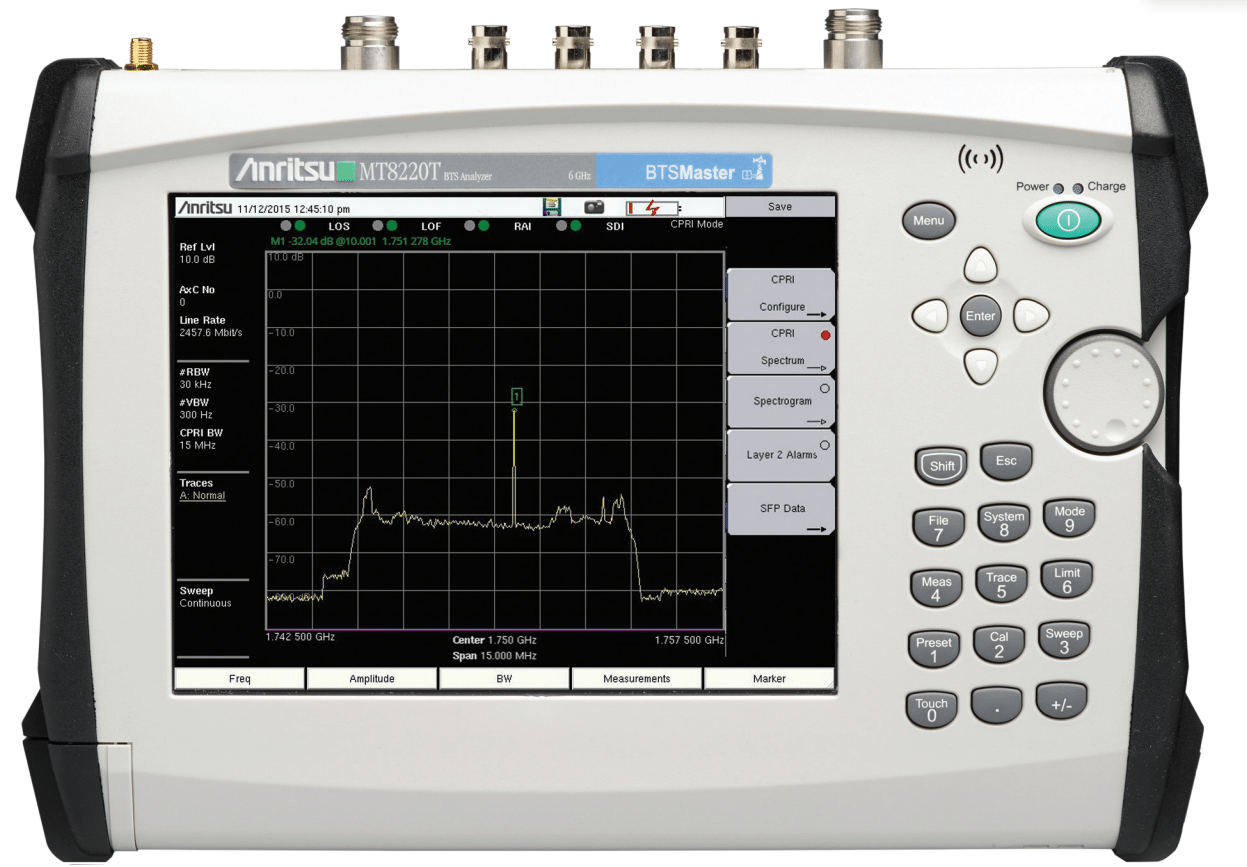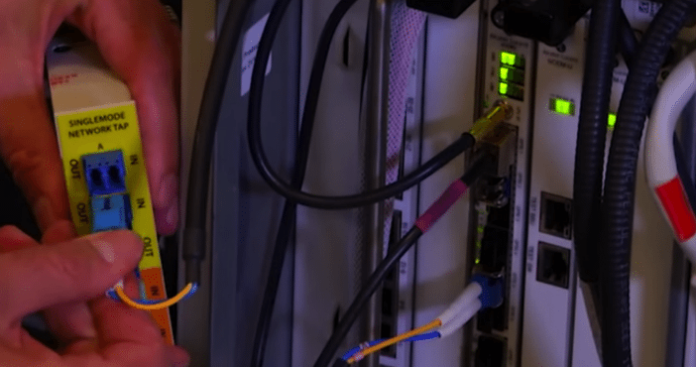CPRI testing at the base station reduces truck rolls, tower climbs and OpEx
Carriers are increasingly turning to centralized Radio Access Network (C-RAN) architecture and CPRI (Common Public Radio Interface) to provide network flexibility, to be able to scale quickly, and to be able to add capacity on demand.
The distributed C-RAN architecture separates the traditional eNB into a baseband unit and the remote radio head connected by a fiber optic link. By inserting an optical tap into the fiber optic link in this configuration, the uplink spectrum can be monitored for interference and noise, which creates a way to significantly reduce operational expenses associated with traditional PIM testing at the tower top.
The optical tap and specialized test equipment enable a technician to monitor the CPRI link and identify interference and/or PIM, and then make informed judgements about the need to send a field tech up to the top of the tower.
“If testing is easier,” Anritsu Strategic Accounts Manager Tom Martino explained, “it can be done more quickly. Testing or monitoring can be done locally by someone with less skill and, if necessary for results interpretation, done remotely by someone with more skill. It’s one less truck to roll and one less tower to climb. The C-RAN architecture and optical CPRI interface at the baseband unit makes this possible.”
CPRI also has major implications for distributed antenna system (DAS) owners looking to save time and money while still providing robust coverage and capacity throughout large spaces, both in-building and outside, including college campuses, stadiums, train stations and hotels.
Connecting a DAS head end directly to a base station using a CPRI link instead of a traditional RF feed cuts down significantly on complexity, space requirements, heat output, cost and inefficiencies. In total, a CPRI-based DAS can be deployed more quickly and add value to a DAS owner’s business case.
As for testing, a technician will temporarily break the fiber link between the baseband unit and remote radio head and insert an optical tap, which connects to the SFP in Anritsu’s BTS Master to measure uplink and downlink. A user enters key parameters—antenna container number and CPRI line rate—to match the CPRI link configuration. The BTS Master then displays the RF spectrum on the CPRI link. Fast sweep time enables the user to be able to see interferers in a way that is familiar to traditional RF interference hunting. Limit lines, markers and a spectrogram, which displays spectral power density over time to pinpoint interference, are all available.

In addition to CPRI, the Anritsu BTS Master MT822OT model supports 4G networks, is a fast sweeping and sensitive RF interference hunter, and provides 20 MHz bandwidth modulation quality for LTE eNodeB testing. The Vector Signal Generator (VSG) option is also very useful in commissioning traditional RF-fed DAS systems and verifying performance by using a complex modulated waveform instead of a CW signal to simulate real conditions at the head end or anywhere downstream.
“Now we can conduct these tests from an optical digital access point with the same tools that are already being used for RF testing and are familiar to users,” Martino said. “It makes the whole process much easier because you benefit from digital processing to figure out where PIM is occurring and why without deploying a physical PIM test set to the tower top. There’s a direct benefit to OpEx.”
For more information about Anritsu’s full line of test and measurement products, click here.

